Correct Answer

verified
1,1-dibrom...View Answer
Show Answer
Correct Answer
verified
View Answer
Multiple Choice
Rank the following compounds from most to least reactive in an SN1 reaction. 
A) I > IV > II > III
B) II > I > IV > III
C) III > IV > I > II
D) IV > I > II > III
E) IV > III > I > II
Correct Answer

verified
Correct Answer
verified
Essay
Show the mechanism for the following elimination, assuming that it is a concerted reaction. 
Correct Answer

verified
Correct Answer
verified
Essay
Draw the major product of the following reaction. 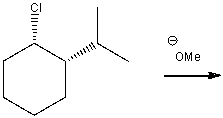
Correct Answer

verified
Correct Answer
verified
Multiple Choice
Which of the following shows a mechanism of a concerted elimination? 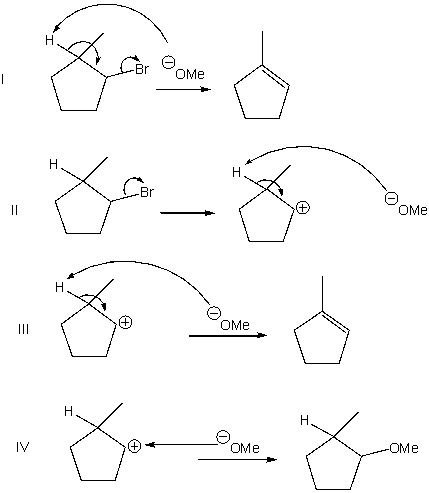
A) I
B) II
C) III
D) IV
Correct Answer

verified
Correct Answer
verified
Multiple Choice
What substitution reaction mechanism is most likely for the following compound? 
A) SN1
B) SN2
C) Either SN1 or SN2
D) None of these
Correct Answer

verified
Correct Answer
verified
Essay
Provide the reagents necessary to carry out the following conversion. 
Correct Answer

verified
Correct Answer
verified
Essay
For the following dehydration, draw the structure of the intermediate carbocation. 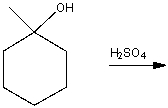
Correct Answer

verified
Correct Answer
verified
Multiple Choice
What is the electrophile in the following reaction? 
A) I
B) II
C) III
D) IV
Correct Answer

verified
Correct Answer
verified
Multiple Choice
Which of the following is a weak nucleophile?
A) OH-
B) H2O
C) CH3O-
D) NH4+
E) All of these
Correct Answer

verified
Correct Answer
verified
Multiple Choice
Predict the product for the following reaction. 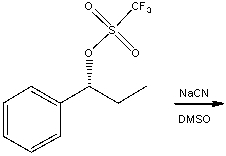

A) I
B) II
C) III
D) IV
E) I and III
Correct Answer

verified
Correct Answer
verified
Short Answer
What is the structure of a rearranged carbocation that does not have a four-membered ring in the following acid-catalyzed dehydration of the following compound? 
Correct Answer

verified
Correct Answer
verified
Short Answer
Will the following alcohol be likely to undergo rearrangement during a dehydration reaction? 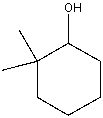
Correct Answer

verified
Correct Answer
verified
Essay
Predict the SN2 product and provide a curved arrow mechanism for the formation of the product. 
Correct Answer

verified
Correct Answer
verified
Essay
What is the IUPAC name for the following compound? 
Correct Answer

verified
(1R, 3S)-3...View Answer
Show Answer
Correct Answer
verified
View Answer
Essay
Draw the major product of the following reaction. 
Correct Answer

verified
Correct Answer
verified
Multiple Choice
Which of the following is a strong nucleophile?
A) OH-
B) H2O
C) CH3OH
D) NH4+
E) All of these
Correct Answer

verified
Correct Answer
verified
Essay
Draw the structure of 2,3-dimethyl-1-pentene.
Correct Answer

verified
Correct Answer
verified
Multiple Choice
Which of the following compounds will undergo the fastest SN1 reaction? 
A) I
B) II
C) III
D) IV
E) Both I & IV
Correct Answer

verified
Correct Answer
verified
Multiple Choice
Which of the following is the rate equation for the following SN1 reaction? 2-chloro-2-methylpentane + NaI ![Which of the following is the rate equation for the following S<sub>N</sub>1 reaction? 2-chloro-2-methylpentane + NaI A) Rate = k[NaI] B) Rate = k[2-chloro-2-methylpentane] [NaI] C) Rate = k[chloride ion] D) Rate = k[2-chloro-2-methylpentane]](https://d2lvgg3v3hfg70.cloudfront.net/TB4454/11ea894b_ac97_e663_bba7_676ef231c68e_TB4454_00_TB4454_00.jpg)
A) Rate = k[NaI]
B) Rate = k[2-chloro-2-methylpentane] [NaI]
C) Rate = k[chloride ion]
D) Rate = k[2-chloro-2-methylpentane]
Correct Answer

verified
Correct Answer
verified
Showing 21 - 40 of 224
Related Exams